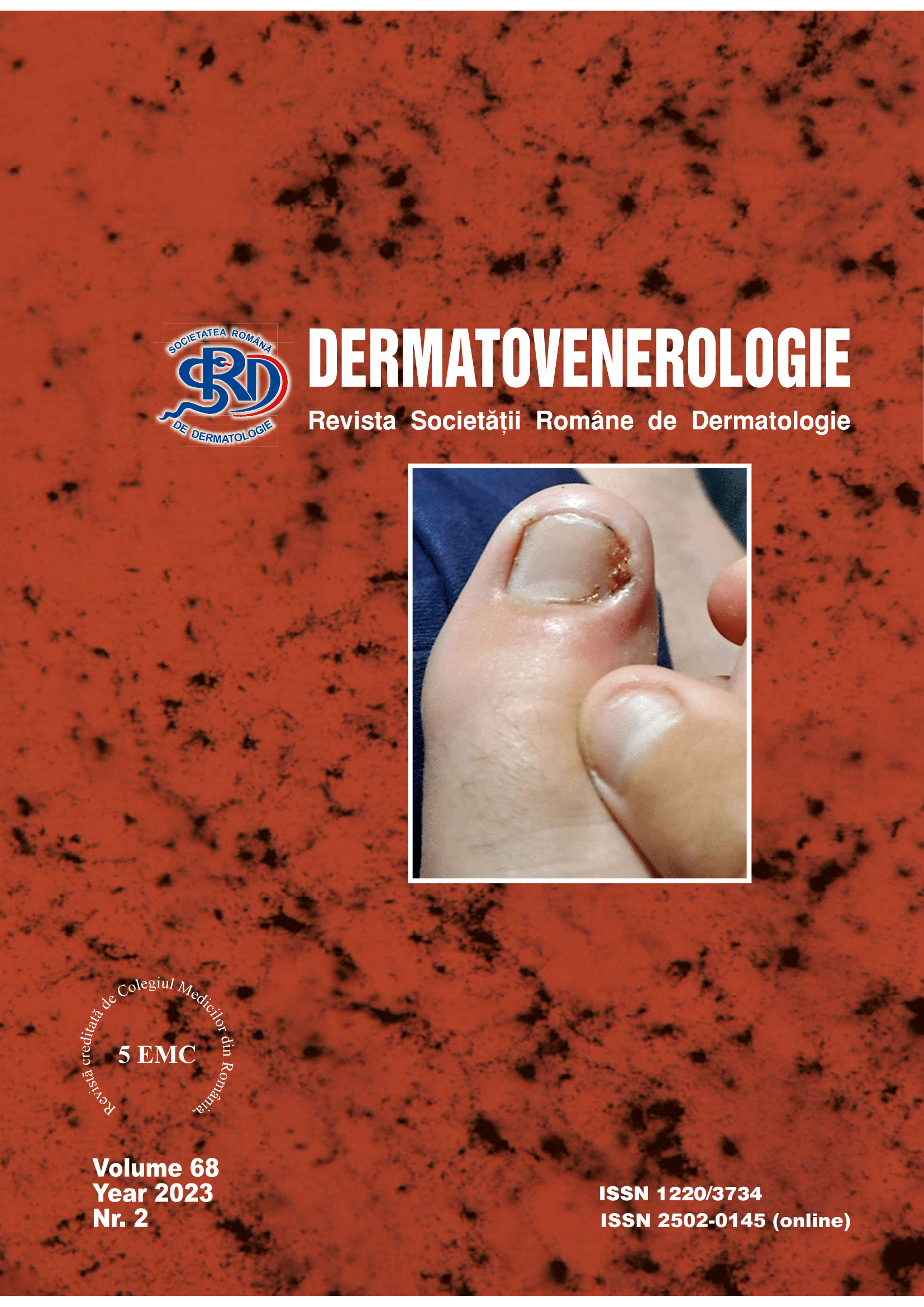Summary
Introduction: Skin ulcers can be difficult to manage and can become a major source of morbidity. Abdominal and thigh localisation is rare. Necrotising panniculitis can occur anywhere, but the most common location is on areas exposed to injury and pressure.
Clinical case: We present here the case of a 78-yearold female patient, known to have insulin-dependent type II diabetes mellitus, hypertension, gastroesophageal reflux disease and morbid obesity, arriving at the medical office/clinic for multiple giant, round-oval ulcerations covered with necrosis and fibrin purulent secretions located on the abdomen and inner thighs. The onset was insidious, in the form of raised erythematous lesions on the thighs that subsided, but with a recurrence on the abdominal area two months ago, with rapid transformation into ulcerations. The patient underwent antibiotic treatment and topical therapy applied by the outpatient surgery service, but with an unfavourable outcome and was subsequently admitted to the dermatology ward. Bacteriological examinations revealed multibacterial superinfection of the ulcers with Klebsiella pneumoniae, E. Coli, Proteus and specific antibiotic therapy was initiated. Histopathological examination revealed focal changes of lipoid necrosis in the hypodermis. The differential diagnosis included pyoderma gangrenosum, necrotising panniculitis or allergic reaction to insulin.
Conclusions: Localisation of ulcerations at the abdominal level (at the site of insulin injection), but also on the thigh and in the intergluteal area is rare and poses diagnostic difficulties. Management of skin ulcers requires careful management of associated pathologies such as diabetes mellitus or hypertension, and morbid obesity in the patient.


